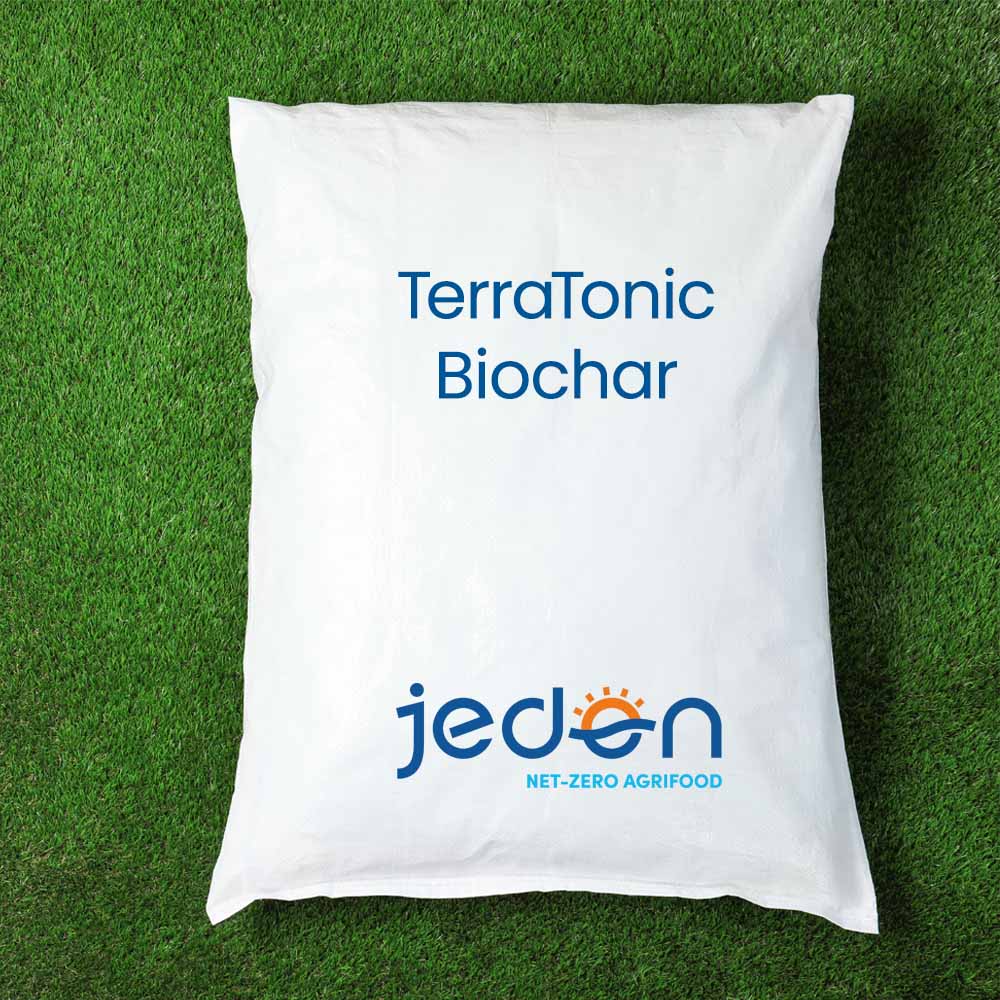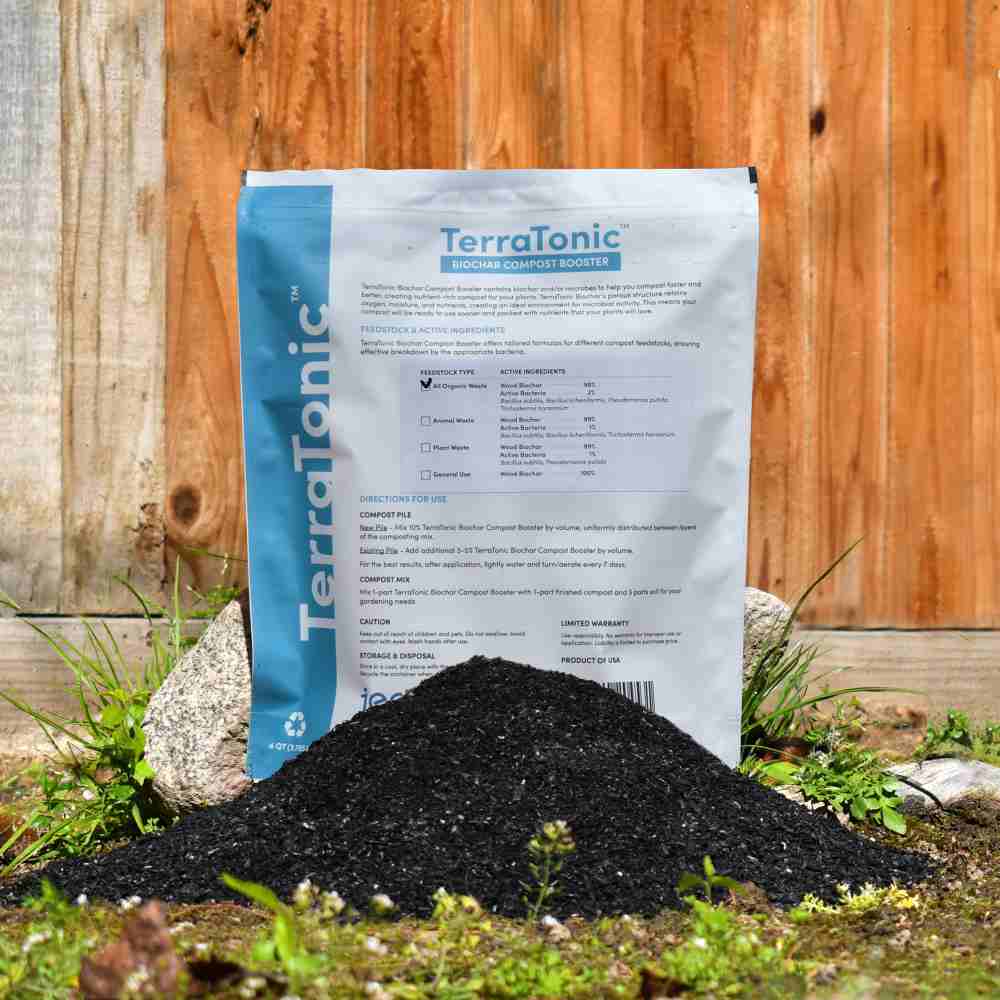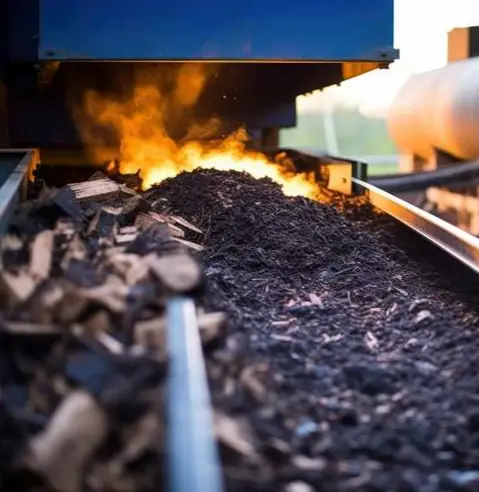Optimizing Soil Health
Explore the Benefits of TerraTonic Biochar
What does biochar do for soil? Find out more about all the biochar innovations you can enjoy with these benefits.
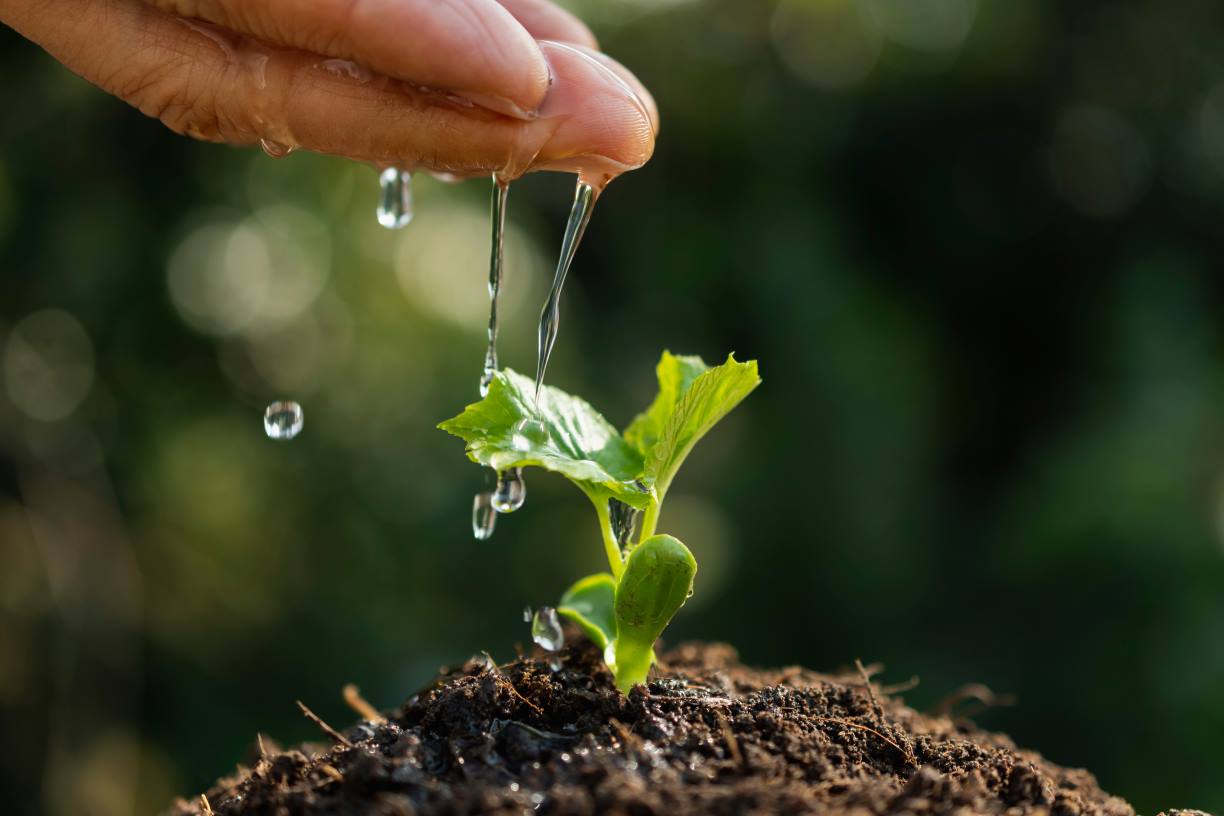
Rich in Organic Carbon
Packed with organic carbon, TerraTonic Biochar is essential for promoting soil health and fostering sustainable agriculture.
Water Holding Capacity
Thanks to its porous structure, TerraTonic Biochar can absorb and store water for the benefit of soil and plants, providing essential hydration when required.
Nutrients Retention
TerraTonic Biochar safeguards nutrients by storing them, preventing leaching, and releasing them gradually to nurture the soil and plants.
Boost Soil Bacteria
TerraTonic Biochar creates a thriving habitat for microorganisms, promoting a balanced and healthy soil ecosystem.
Our Custom Biochar Inoculation
Our custom biochar blends integrate microbial inoculants and nutrients into pre-conditioned biochar, creating an effective biochar bioremediation medium tailored to restore degraded soils and upcycle organic waste.
Enhanced Soil Health
Microbe-enhanced biochar boosts soil fertility and regenerates degraded land.
Cost & Time Efficiency
Our all-in-one and ready-to-apply blends eliminate the need for multiple products, saving time and reducing costs, with no lengthy inoculation wait.
Sustainable Impact
Formulated with natural, organic ingredients, our solutions support sustainable agriculture, promote long-term soil health, and contribute to environmental restoration.
Versatile Solutions
Effectively address a variety of agricultural and environmental needs, delivering results across diverse soil types and conditions.
What Is Biochar | About TerraTonic Biochar
What does biochar do for soil? It offers a sustainable material that promotes microbial activity by retaining oxygen, moisture, and nutrients in its porous structure.
Wood Biochar
This material is made by heating forestry softwood residues, which would otherwise pose a fire hazard, in a controlled environment with limited oxygen. This process, known as pyrolysis, transforms the residues into a highly stable and durable carbon-rich material called biochar.
This material is made by heating forestry softwood residues, which would otherwise pose a fire hazard, in a controlled environment with limited oxygen. This process, known as pyrolysis, transforms the residues into a highly stable and durable carbon-rich material called biochar.
Porous Structure
Biochar is fundamentally made of tiny pores, ranging from micrometers to nanometers, that provide a vast surface area for microbial attachment and growth. These pores also store water and nutrients, releasing them to the environment as needed.
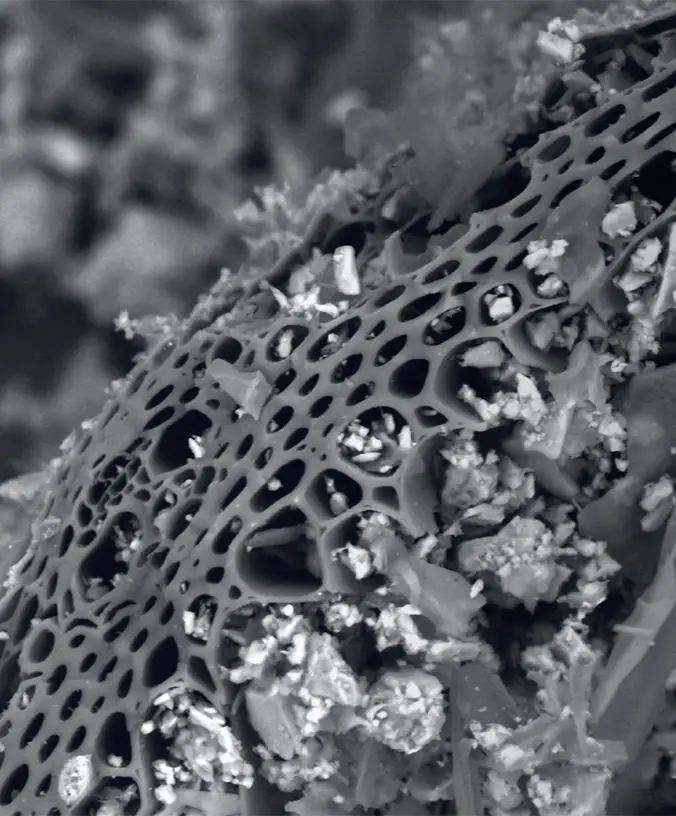
Elevate your soil quality with TerraTonic Biochar Soil Conditioner, a natural solution to rejuvenate soil health. This premium biochar innovation enhances water retention, improves nutrient accessibility, and fosters a thriving environment for beneficial microbes, resulting in vibrant plant growth.
Enhance your composting with TerraTonic Compost Booster. Our formula, with premium biochar and microorganisms, accelerates composting by improving aeration, moisture, and microbial activity. What does this biochar do for soil? It creates rich compost for healthy, thriving plants.
General Tips for Best Results

Charging Biochar
Place biochar in a container and saturate it with water. Mix in organic matter, nutrients, and microbes.

Mixing into Soil
Mix the biochar with soil at a rate of 5-10% by volume. For new planting or transplanting, add a ¼-½ inch layer of biochar at the bottom of the hole, container, or bed.

Watering after Application
Thoroughly water the soil or compost materials after applying biochar and layering it into your planting area.
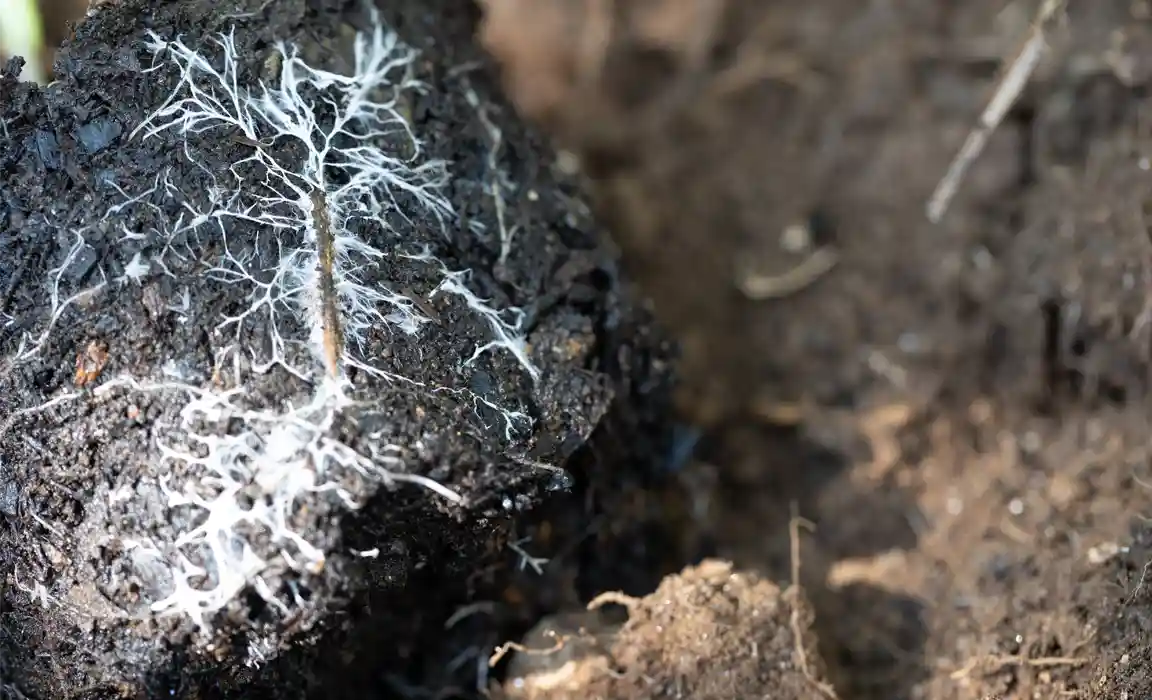
Applications of TerraTonic Biochar
 Transform your sandy or clay soils into nutrient-rich soil with just one annual application of TerraTonic Biochar. Improve water and nutrient retention to support plant growth and vitality in your garden or horticultural space.
Transform your sandy or clay soils into nutrient-rich soil with just one annual application of TerraTonic Biochar. Improve water and nutrient retention to support plant growth and vitality in your garden or horticultural space.
- Promotes soil health and sustainability
- Conserves water resources
- Boosts microbial activity in soil
- Reduces the need for excessive fertilizers
 What is biochar’s role in landscaping? It can elevate your projects for a beautiful and environmentally friendly outdoor space. Facilitate lush and thriving landscapes that benefit both your property and the environment.
What is biochar’s role in landscaping? It can elevate your projects for a beautiful and environmentally friendly outdoor space. Facilitate lush and thriving landscapes that benefit both your property and the environment.
- Enhances soil health for resilient plant growth
- Reduces water and nutrient wastage
- Fosters a sustainable soil-plant ecosystem in outdoor spaces
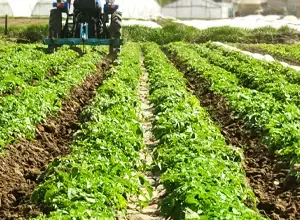 By incorporating biochar into organic farming practices, you can enhance soil health and boost crop yields sustainably. This stable organic carbon enriches the soil, reducing the need for external inputs and ensuring organic, nutrient-rich produce.
By incorporating biochar into organic farming practices, you can enhance soil health and boost crop yields sustainably. This stable organic carbon enriches the soil, reducing the need for external inputs and ensuring organic, nutrient-rich produce.
- Improves soil fertility for crop vitality
- Helps with water and nutrient management, especially in areas prone to drought
- Reduces labor and costs for watering and fertilizing
- Supports farms in their sustainability efforts
 Environmental Remediation
Environmental Remediation
TerraTonic Biochar has the unique ability to absorb and trap harmful substances like heavy metals, odors, and contaminants within its structure, preventing their release into the environment.
- Improves soil structure, reducing erosion risk
- Captures carbon and lowers greenhouse gas emissions
- Serves as a natural water filter, removing contaminants like heavy metals and pesticides
- Offers a sustainable solution
FAQs About Biochar
Still curious about charging biochar or what biochar can do for soil? Get answers to the most common concerns when you check out what our experts have to say.

